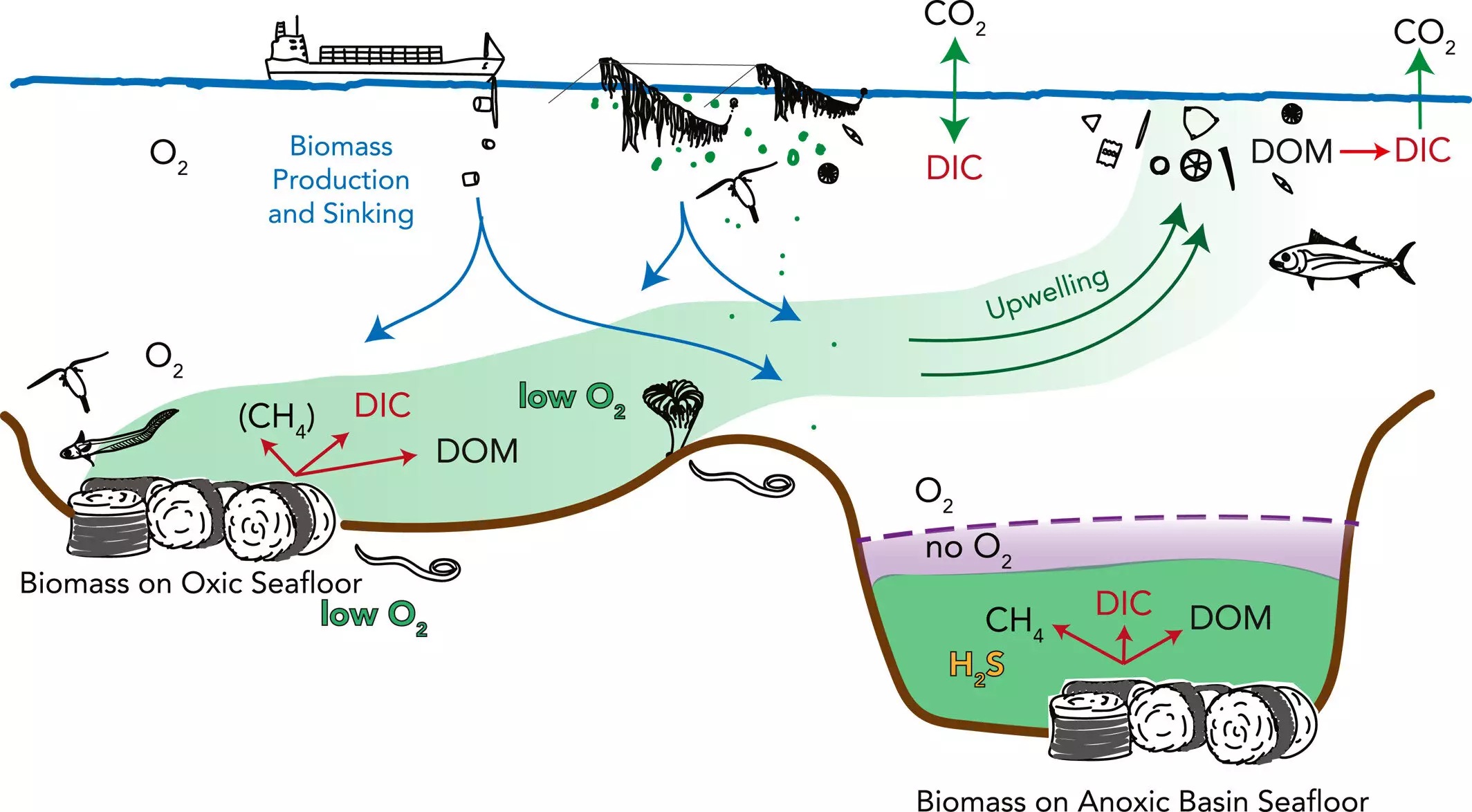Deep ocean carbon sequestration is gaining attention as a potential solution for reducing carbon levels in the atmosphere. Researchers from UC Santa Barbara have identified anoxic marine basins as promising locations for large-scale carbon sequestration while minimizing negative impacts on marine life. These barren, oxygen-free zones on the seafloor provide an opportunity to store plant biomass, preventing the release of CO2 and methane into the air as it degrades. This method could play a crucial role in achieving climate goals set by the International Panel on Climate Change, which aim to limit global warming to 1.5°C above preindustrial levels.
While sinking plant biomass to anoxic marine basins is not a new concept, there are significant uncertainties surrounding its implementation. The introduction of large amounts of plant material could potentially impact the chemistry and ecology of these areas. There is also a risk of decomposition byproducts escaping into sensitive habitats or carbon resurfacing in the water column. These unintended consequences pose a threat to fragile ocean ecosystems and may hinder carbon sequestration goals. Researchers emphasize the need to identify the least harmful approach to this idea to ensure its effectiveness.
Anoxic marine basins have emerged as ideal locations for deep ocean carbon sequestration due to their unique characteristics. These basins are deep and isolated from oxygen-supplying currents, limiting their ability to support animal life. Instead, they are inhabited by microbes and specialized fungi with different metabolisms than organisms in oxygen-rich environments. These conditions are conducive to preserving plant matter, essentially locking carbon away for extended periods. The researchers selected three anoxic marine basins for further examination to determine the most suitable location for biomass storage: the Black Sea, the Cariaco Basin, and the Orca Basin.
Read More: China’s Post-Pandemic Economic Recovery Sparks Hope Despite Challenges
Among the three basins studied, the Black Sea emerged as the most favorable option for carbon sequestration. With a depth of 2,300 meters and an area of 322,367 square kilometers, this anoxic basin has the capacity to contain biomass on a scale relevant to global climate goals. Its isolation from the rest of the ocean makes it an ideal candidate for storing plant biomass. The unique characteristics of the Cariaco Basin and the Orca Basin were also considered, highlighting the potential benefits and challenges associated with each location.
The concept of sinking plant biomass in anoxic marine basins has attracted the interest of private investors, leading to increased funding for research and projects in deep-sea carbon sequestration. Various organizations are exploring different sources of biomass, including fast-growing seaweed and terrestrial vegetation, to assess the feasibility of this approach. While there are benefits to each strategy, further investigation is needed to fully understand the implications of deep ocean carbon sequestration. Research in this field, such as the study conducted by UC Santa Barbara researchers, plays a crucial role in advancing our knowledge and informing future decision-making processes.


Leave a Reply